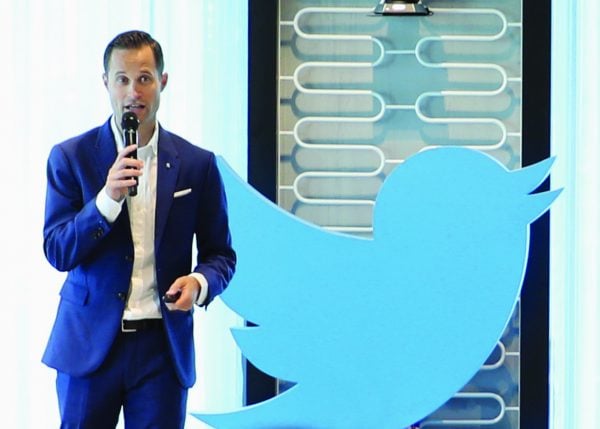
What do #MeToo, Colin Kaepernick and Mayochup have in common? At the Dubai Lynx, Alex Josephson, head of global brand strategy at Twitter, answered this question, in a presentation called The Speed of Culture: HumanCentric Ideas Worth Talking About.
One of the key points he looked at is what changes a ‘moment’ on Twitter into a ‘movement’. Which will help answer that question above: All three of those phenomena became movements on the social platform.
Josephson, who spoke to Campaign from New York last week, explains that The Speed of Culture will look at
the formula for breaking news – of any sort – on Twitter. Some stories peak in terms of conversation and
reach in the 48-72 hours after they break, marking them as social moments, while others are still being
talked about after more than three days, both on and off the platform. They are the movements.
About 10 days after revelations emerged about Hollywood movie mogul Harvey Weinstein’s harassment
of women, actress Alyssa Milano suggested that women who have been sexually harassed or assaulted should
reply to her tweet with the words “me too”. This quickly became a hashtag, which was shared millions of times
around the world. It demonstrated just how prevalent sexual harassment and assault is, led to hundreds of powerful men leaving positions of authority (often to be replaced by women) and led Time magazine to name ‘The Silence Breakers’ as its 2017 Person of the Year.
NFL quarterback Colin Kaepernick, in September last year, tweeted: “Believe in something. Even if it means sacrificing everything.” He had gained fame and notoriety for kneeling during the US national anthem at American football games to protest the treatment of African Americans by the police. And the tweet not only announced a new campaign for sports brand Nike, led by Kaepernick, but also gave Nike a moral position on a controversial subject. Supporters tweeted their new Nike purchases; opponents shared videos of their burning merchandise. The campaign video, voiced by Kaepernick was shown around the world on all major platforms, including Twitter.
The third example of a movement that Josephson gives is much lighter, and concerns the mixing of mayonnaise and ketchup. Some Americans think it is the next step towards tastebud Nirvana, while others insist it is an abhorrence. So FMCG manufacturer Heinz took it to the people with a Twitter poll: if it got 500,000 yes votes, it would put Mayochup into production. More than 900,000 people voted within 24 hours, Heinz made its numbers and the conversation moved beyond Twitter and into the realm of national news networks.
Josephson is at pains to emphasise that his equation of the three examples stops short of saying the issue of condiment blending is of the same social importance as sexual harassment and institutionalised racism. But he says all three share three key ingredients that anyone – including brands – can learn from if they want to make their moment on Twitter turn into a movement. They must be human-centric. That is, they must cater to an existing audience. #MeToo addressed an ongoing conversation about harassment; Kaepernick’s taking a knee had already stirred debate; and opinions on sauce have been divided as long as ketchup and mayonnaise have
stood together on the dining table.
They must launch something new. #MeToo launched a movement; Kaepernick launched an ad; and Heinz launched a new product. And what they launch must, in turn, be worth talking about. This is evident in the ongoing discussions around sexual misconduct; around both the #BlackLivesMatter movement and Nike’s endorsement of Kaepernick’s actions; and, well, around what to dip your chips in. Some marketers might still be nervous, though. After all, Twitter can amplify the bad just as much as it boosts the good, and there are
plenty of examples of brands who have got it wrong. If they are lucky, they have had a bad moment.
At worst, they can raise a whole movement against themselves. So to weigh brand bravery against caution when contemplating a major move on Twitter, Josephson says brands should embody a consistent point of view on and off Twitter. This means they cannot be accused of hypocrisy or jumping on a cause bandwagon. They should also demonstrate before they communicate. Nike, for example, has supported controversial athletes
in the past. And it had already positioned itself as an advocate for diversity (for example, through its marketing of sports hijabs) before it joined the #BlackLivesMatter debate. First practise, and only then begin preaching. Build up your brand’s position before shining a light on it.
If the consistency is there, and brands follow Josephson’s rules, they can turn their moments into movements too.









